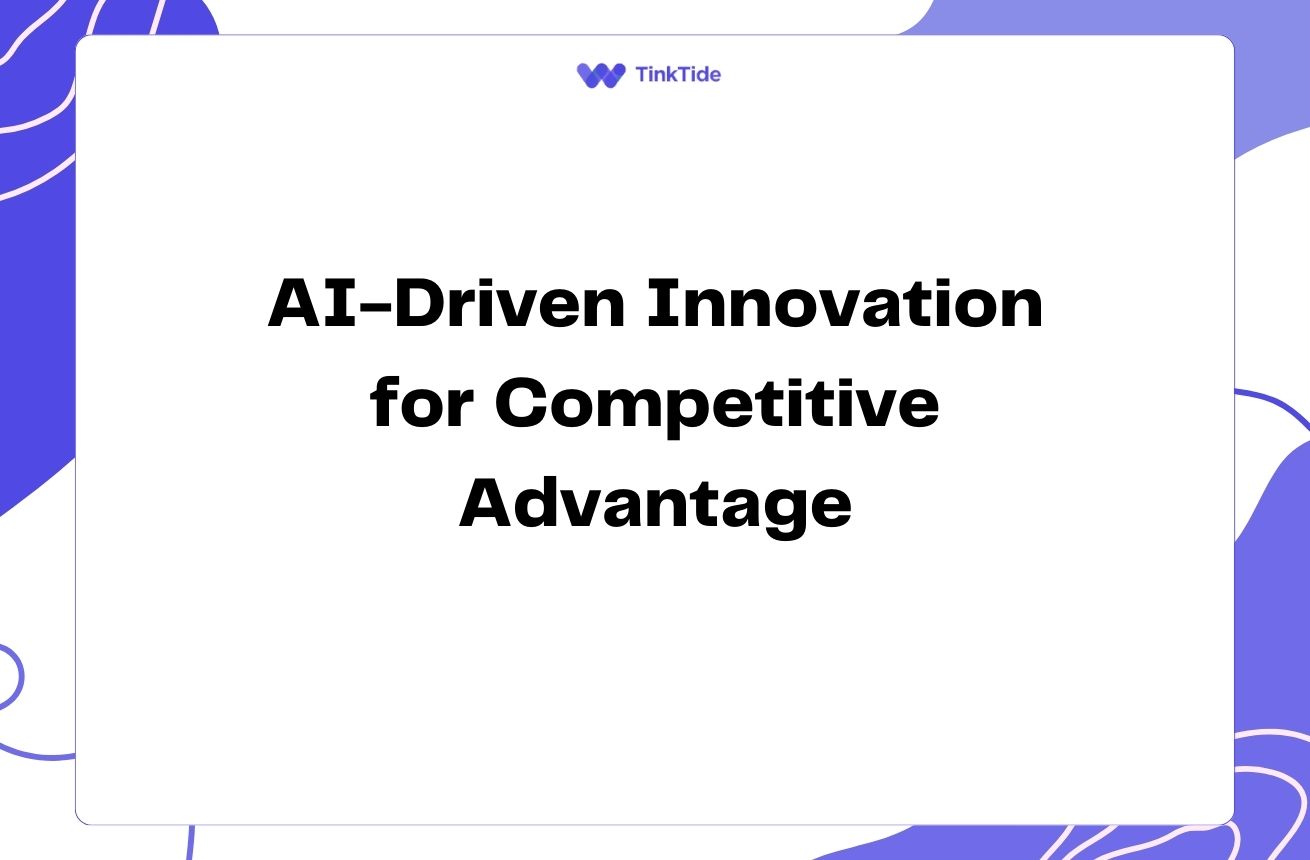Unleash Fashion Tech Innovation: Creative Ideation Techniques
The Fashion Tech Revolution
The fashion industry is undergoing a dramatic transformation, driven by technological advancements. From smart textiles to augmented reality shopping experiences, technology is reshaping how we design, produce, and consume fashion. As a fashion professional or entrepreneur, it's crucial to stay ahead of the curve by generating innovative ideas that blend fashion and technology.
In this article, we'll explore creative ideation techniques to help you generate groundbreaking concepts for integrating technology into fashion. These methods will spark your imagination and pave the way for the next big fashion tech innovation.
By embracing these ideation techniques, you'll be better equipped to address challenges in the fashion industry, such as sustainability, personalization, and enhanced user experiences. Let's dive into the world of fashion tech ideation and unlock your creative potential.
Brainstorming: The Foundation of Ideation
Brainstorming is a classic ideation technique that remains highly effective in generating fashion tech ideas. To make the most of your brainstorming sessions, follow these guidelines:
- Set a specific goal or problem to solve
- Encourage wild ideas and suspend judgment
- Build on others' ideas
- Use visual aids like mind maps or sketches
- Time-box your sessions for focus and energy
For example, you might brainstorm ideas for smart textiles that can adapt to environmental conditions. This could lead to concepts like temperature-regulating fabrics or color-changing garments that respond to UV light.
Cross-Industry Inspiration
Look beyond the fashion industry for inspiration. Technologies from other sectors can often be adapted or reimagined for fashion applications. Consider these industries:
- Healthcare (e.g., biomonitoring textiles)
- Automotive (e.g., self-cleaning fabrics)
- Gaming (e.g., AR fashion try-ons)
- Sports (e.g., performance-enhancing wearables)
- Architecture (e.g., shape-shifting garments)
For instance, the concept of telemedicine could inspire ideas for remote fashion consultations using AR technology, allowing stylists to virtually dress clients from anywhere in the world.
Trend Forecasting and Scenario Planning
Anticipating future trends is crucial in fashion tech ideation. Combine trend forecasting with scenario planning to envision potential futures and generate ideas that address upcoming needs and desires.
Start by researching emerging technologies, social trends, and environmental factors. Then, create scenarios that describe possible future states of the fashion industry. Use these scenarios as a springboard for ideation.
For example, considering the growing concern for sustainability, you might envision a future where all clothing is recyclable. This could lead to ideas for biodegradable smart fabrics or blockchain-powered recycling systems for fashion items.
Design Thinking Workshops
Design thinking is a powerful approach to innovation that focuses on user needs and experiences. Organize design thinking workshops to generate user-centric fashion tech ideas. The process typically involves these stages:
- Empathize: Understand user needs and pain points
- Define: Frame the problem or opportunity
- Ideate: Generate a wide range of possible solutions
- Prototype: Create quick, low-fidelity prototypes
- Test: Gather feedback and iterate
For instance, a design thinking workshop might reveal that consumers struggle with sizing when shopping online. This could lead to ideas for AI-powered virtual fitting rooms or smart fabrics that adjust to body measurements.
Collaborative Platforms and Hackathons
Leverage the power of collective creativity by using collaborative platforms and organizing hackathons. These events bring together diverse talents and perspectives, leading to unexpected and innovative ideas.
Platforms like InnoCentive or OpenIDEO allow you to tap into global networks of problem solvers. For fashion tech-specific collaboration, consider organizing virtual or in-person hackathons that bring together fashion designers, technologists, and entrepreneurs.
A fashion tech hackathon might result in ideas like blockchain-based authentication systems for luxury goods or AI-driven personalized fashion recommendations based on real-time data from wearable devices.
Biomimicry and Nature-Inspired Design
Nature has solved many complex problems through evolution. Biomimicry involves looking to nature for inspiration in solving human challenges. This approach can lead to groundbreaking fashion tech ideas.
Consider natural phenomena and how they might apply to fashion technology. For example:
- Lotus effect for self-cleaning fabrics
- Butterfly wing structures for color-changing materials
- Spider silk properties for strong, flexible fibers
- Pinecone mechanics for moisture-responsive textiles
Exploring biomimicry might lead to ideas like shape-memory fabrics inspired by plant movements or color-changing textiles based on cephalopod skin.
Rapid Prototyping and Iteration
Once you've generated a pool of ideas, it's crucial to quickly test and refine them. Rapid prototyping allows you to bring concepts to life and gather feedback early in the process.
Use tools like 3D printing, Arduino, or simple mock-ups to create tangible representations of your ideas. Test these prototypes with potential users and iterate based on their feedback.
For example, you might create a simple LED-embedded fabric sample to test the concept of mood-responsive clothing. User feedback could then guide further development of the technology and its applications.
Address common questions
As you explore fashion tech ideation, you may encounter some common questions. Here are answers to help guide your creative process:
How can I ensure my fashion tech ideas are commercially viable?
Focus on solving real user problems and consider market trends. Conduct user research and feasibility studies to validate your ideas before investing significant resources.
What skills do I need to develop fashion tech innovations?
A combination of fashion design knowledge, technical skills (e.g., coding, electronics), and business acumen is ideal. Consider collaborating with experts in areas where you lack expertise.
How can I protect my fashion tech ideas?
Consider filing patents for unique technological innovations. For designs, you may use design patents or copyright protection. Consult with an intellectual property lawyer for specific advice.
What are some emerging technologies that could impact fashion?
Keep an eye on advancements in AI, IoT, blockchain, 3D printing, nanotechnology, and biotechnology. These fields have the potential to revolutionize various aspects of the fashion industry.
How can I balance creativity with sustainability in fashion tech?
Prioritize eco-friendly materials and processes in your ideation. Consider the entire lifecycle of your products, from production to disposal. Look for ways technology can enhance sustainability in fashion.
Provide additional resources
Fashion Innovation Agency
Explore cutting-edge fashion tech projects and collaborations
Wearable Technologies
Stay updated on the latest in wearable tech and smart textiles
The Business of Fashion
Read about technology's impact on the fashion industry
IDEO U: Design Thinking Course
Learn design thinking methodologies for innovation
AskNature
Explore biomimicry ideas and applications for design inspiration
Embrace the Future of Fashion Tech
Generating creative ideas for integrating technology into fashion is an exciting and challenging endeavor. By employing these ideation techniques, you'll be well-equipped to innovate at the intersection of fashion and technology.
Remember that the most groundbreaking ideas often come from unexpected connections and persistent exploration. Don't be afraid to think big, experiment, and iterate on your concepts.
As you embark on your fashion tech ideation journey, stay curious, collaborate with diverse minds, and always keep the end-user in focus. The future of fashion is waiting to be shaped by your innovative ideas.
Ready to Bring Your Fashion Tech Ideas to Life?
Turn your innovative concepts into reality with our powerful ideation and project management tools.
Start Your Free Trial

